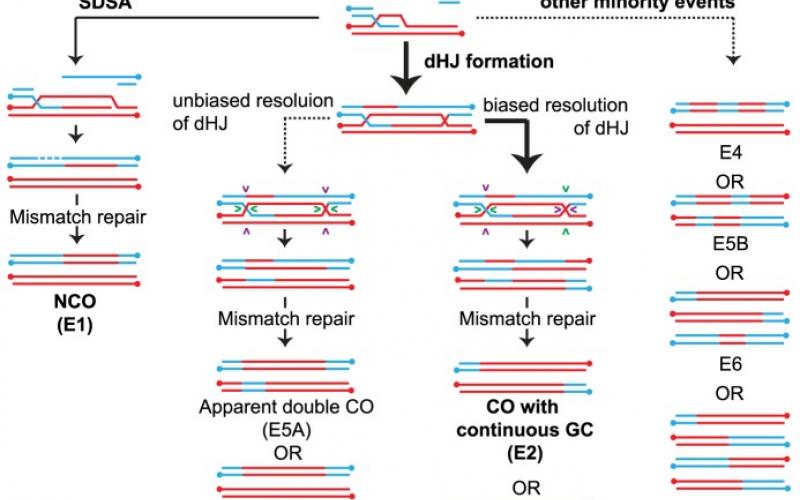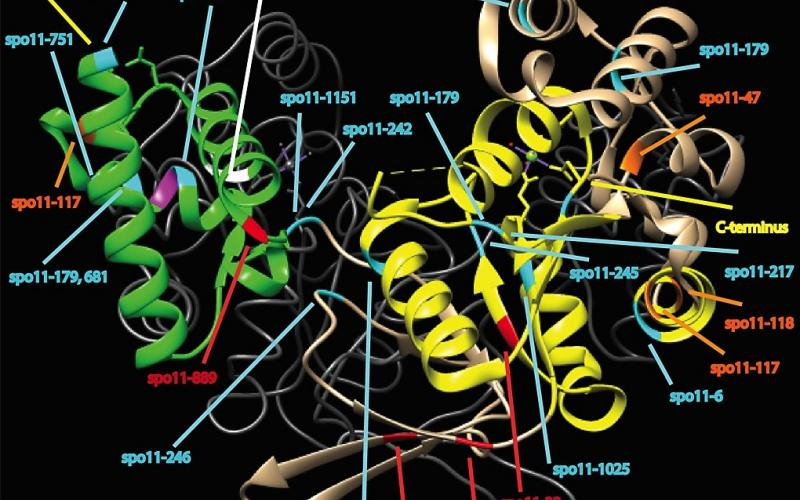Chromosome Synapsis and Recombination Control During Meiosis
The long-term goal of research in Jennifer Fung's laboratory is to determine how chromosome synapsis functions to promote proper chromosome segregation during meiosis. Chromosome missegregation during meiosis is directly tied to human infertility and is also the leading known genetic cause for mental retardation and developmental disabilities. Elucidating the basic mechanisms underlying proper chromosome segregation during meiosis enables greater understanding of the intricate pathways that contribute to normal gametogenesis and fertility. During meiosis, homologous chromosomes pair and then synapse. Synapsis occurs via the assembly of a proteinaceous structure known as the synaptonemal complex that forms between homologous chromosomes. Successful assembly of the synaptonemal complex is a key prerequisite to proper chromosome segregation during meiosis. However, many basic questions about the kinetics of assembly of these structures remain unanswered. We are interested in determining how synaptonemal complex assembly contributes towards its dual function of 1) maintaining a tight association between homologs and 2) promoting crossing over and its regulation. Towards this goal, we use fast, live, 3-D fluorescence imaging and quantitative image analysis to determine the kinetics of synapsis in budding yeast. In addition, we developed a genomic deep sequencing method that allows us to map all recombination events of a single meiosis. Combining these approaches with mutant analysis allows us to directly address how synapsis and recombination might work together.






